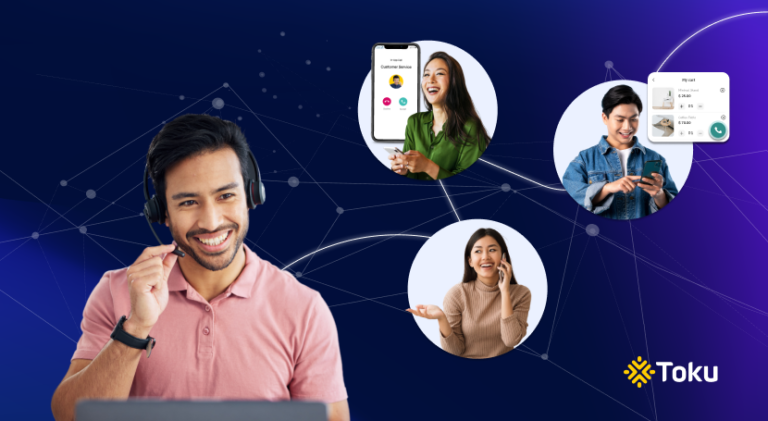Uncover insights to elevate your in-app communications, turning users into loyal customers. Transform your approach to customer experience with our Singapore Consumer Engagement Report 2023.
Some things age well.
Works of art. Fine wines. Vintage furniture and antiques. Some things don’t. Fax machines. Pagers. 80’s hairstyles.
And so it is with legacy communications. Similar to software updates, you need to stay with the times (actually – you need to get ahead of the times). So, let’s take a look at how businesses can update and adapt their business communications to flourish in the brave new digital world we inhabit.
Legacy systems – what are they?
Legacy systems refer to technology that is old and in the process of being replaced by newer technology. During the transition, legacy technology is still in use and sometimes it is still widely used.
Gartner defines a legacy application as “an information system that may be based on outdated technologies, but is critical to day-to-day operations”.
The antiquated operating system MS-DOS is still used on old hardware in many power plants around the world, for example. Government institutions often run old operating systems or outdated software and hardware too.
Why is this so?
The main reason is cost. For large organisations and institutions, it is expensive to overhaul or even upgrade legacy systems. For instance, take the example of power plants, in order to upgrade all their machines to higher spec Windows systems, they would have to shut down their operations for an extended time, which isn’t possible without serious disruption to the power supply.
Legacy systems – regional disparities
When it comes to legacy systems and old technology, some world regions are behind others.
For instance, in the APAC region, core banking software is out of date in 95% of banking institutions. This leaves APAC banks at a serious competitive disadvantage, especially when you consider that western banks are accelerating their modernisation efforts at an increasing rate. For instance, Bank of America revealed that they had invested $2 to $3 billion in new software annually over the past few years.
Modernising legacy business communication systems
The first thing to realise is that modernising legacy systems does not simply mean updating them.
It’s about transforming your systems in preparation for the new developments in technology. In terms of business communications this means getting everything ready for increased digitisation and remote working.
Most businesses are looking to achieve ‘digital transformation’ these days. They are also keen to move towards ‘unified communications’, as both of these things enable easier collaborative remote working, increased efficiency, and higher productivity.
Fortunately there are several options if you are looking to modernise your legacy systems.
- Complete overhaul and renewal – A process often called ‘rebuild and replace’, this involves ripping out the legacy technology entirely and replacing it with newer tech. This could mean replacing hardware, operating systems, communication networks, or software.
- Incremental change – Gradual replacement is another option, which involves replacing parts of the legacy system, component by component. The main problem with this is that you often end up with more and more systems built on top of each other, adding to the complexity.
- Patch things up – A rough and ready approach is to quickly create workarounds and patches to make the legacy systems just about functional. For instance, you may get a developer to create a patch that adds some important features to an existing application, but it doesn’t necessarily improve the overall performance of the app.
- Enhance existing systems – This approach can be highly cost-effective and efficient. It involves making improvements to the legacy systems and optimising them to work alongside newer technology. For instance, integrating new software with existing systems using an API is a cheap and effective way to breathe new life into legacy systems.
One thing is for sure, if you want to survive in today’s modern digital world – doing nothing isn’t an option. You can’t continue to rely on legacy technology in a world that demands innovation.
Why should you modernise your legacy systems as soon as possible?
There are many benefits to updating legacy technology, the main one being financial. However, the benefits may not be immediately obvious as costs may be higher for the first year or so.
But even if the outlay is relatively high, purchasing new hardware or integrating systems for instance, the long term savings and increased productivity often outweigh the cost. In other words, the overall ROI can be high. Also, there are additional benefits to be gained, such as workflow automation for instance.
Let’s take a look at the financial benefits in more detail, as well as some other advantages of modernising legacy systems.
- Cost Savings – As mentioned, modernising legacy systems is often a high ROI proposition. Research shows that implementing cloud-based solutions will save up to 65% on IT infrastructure costs within the first three years, for example.
- Less Maintenance & Support – Legacy systems demand much more support and maintenance. The simple fact is that older technology just isn’t designed to keep up with modern demands, which means IT departments are left fire-fighting problems that arise.
- Improved Compliance – Compliance with best practices and standards often depends on running up-to-date systems that can deliver the best results.
- Increased Security – In today’s hyper-connected world things like data security and secure communications are key to survival. The reputation damage and cost of the consequences that may arise from running insecure legacy systems can be devastating to any business.
- More agile, scalable and efficient – Many successful modern businesses apply a lean and agile approach to their strategy and operations. Modernised systems, or legacy systems that can operate efficiently alongside modern systems will allow you to adapt more quickly to change and pivot your strategies if needed
How can you prepare your business for the digital future?
In order to prepare your business for the digital future you need to consider modernising your legacy systems. But this requires thought and planning. You can’t just jump in and start replacing and upgrading systems without weighing up the consequences.
The following steps will help you to prepare for digital change.
- Consider the challenges and risk – You can create a risk map to work out the probability of certain events occurring based on different courses of action.
- Create a detailed budget estimate – Decide how much you can afford to spend without breaking the bank.
- Audit your existing legacy systems – Go through every part of your current workflows and operations, making a note of any legacy technology or system that you come across and how it affects your business.
- Analyse various modernisation strategies – Using the list above, weigh up the pros and cons of different modernisation approaches, comparing estimated cost against potential long-term savings. You should also consider researching vendors that have hybrid experience to make sure that replacement or enhancement strategies work out successfully. For instance, if you want to integrate communications systems with business tools using APIs, you may want to choose Toku as we create modern API solutions, but we’re also the biggest APAC communications network provider.
 Rajesh Gopinathan
Rajesh Gopinathan 


 Nora Huin
Nora Huin 
 Thomas Laboulle
Thomas Laboulle 
 V K Sanjeed
V K Sanjeed